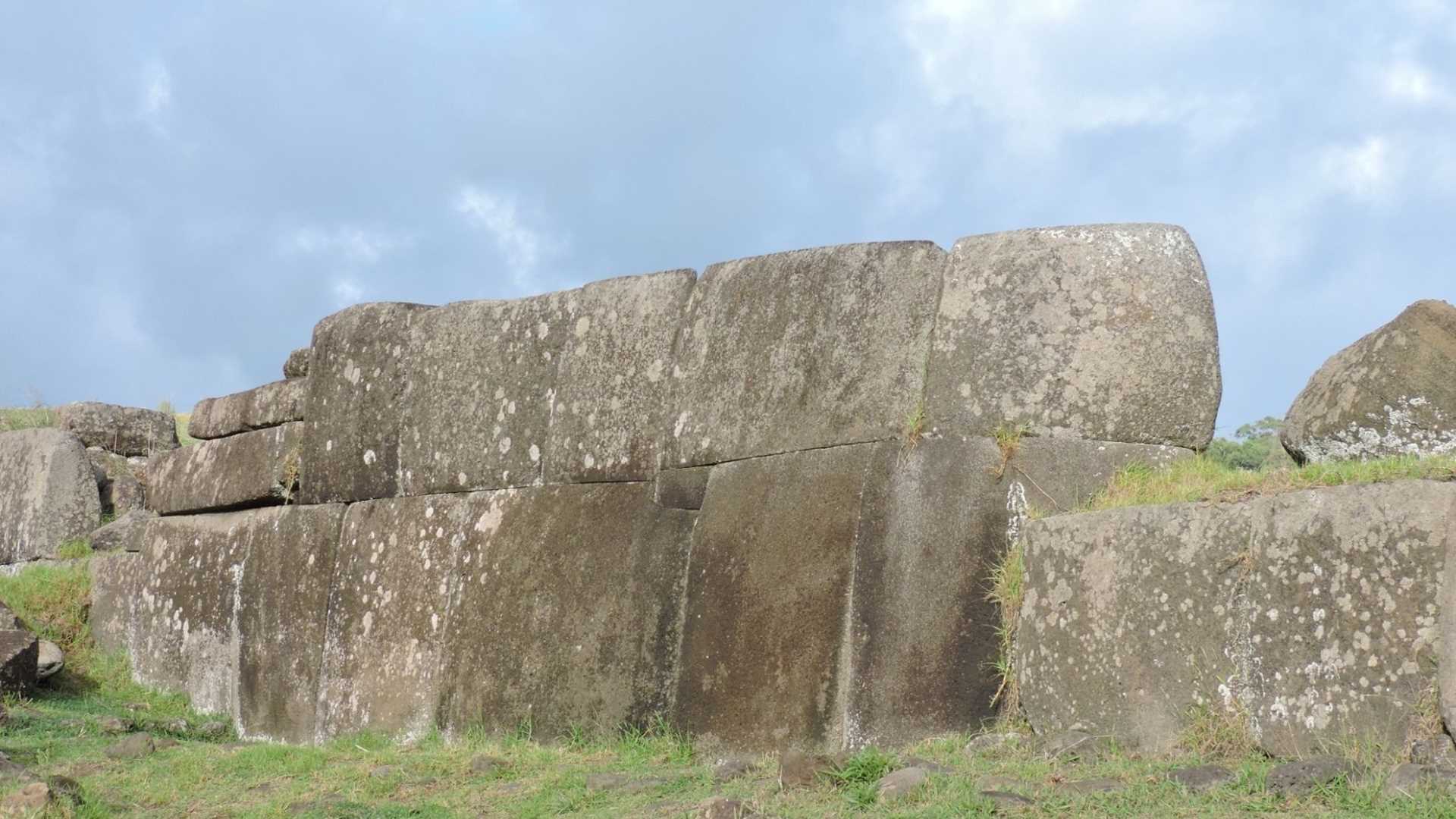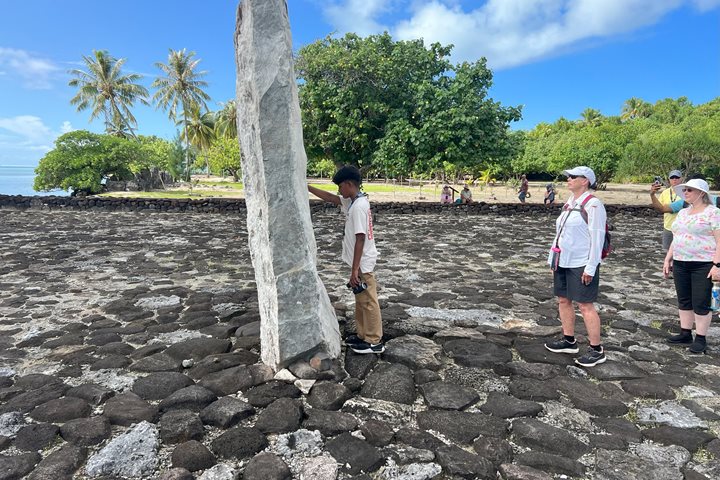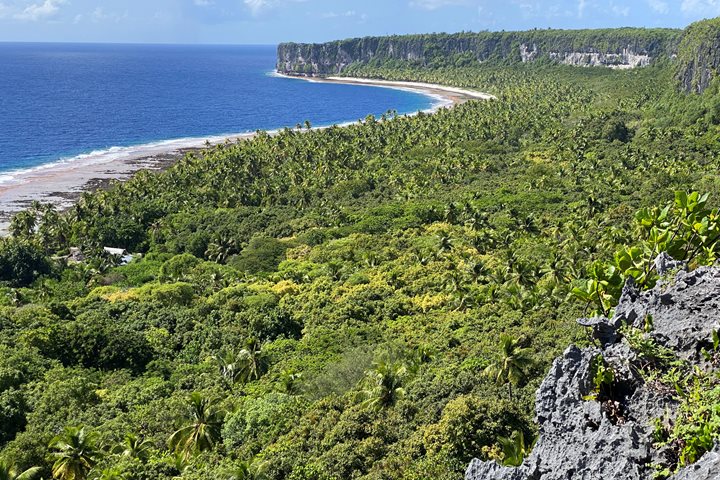After checking out from hotel rooms, we headed to Ahu Vinapu to view the most beautifully made altar on the island. Of course, the moai had long ago been toppled, just like all the others, but the altar itself remains in excellent condition. The stone work here is superb, highly reminiscent of Incan tooling found in Peru. In fact, this site helped convince Thor Heyerdahl that the people of Easter Island had originated in South America and populated Polynesia from the east. His theory was buoyed up by his incredible Kon Tiki raft expedition, proving it was possible in those early times to make the voyage on a Peruvian-styled raft. We now know his theory was wrong, since the advent of DNA evidence showing Polynesians to be of Asian origin. But we also now know there was contact between Polynesians (perhaps from Easter Island) and South Americans. So despite his theory not being correct, it was not entirely off base.
At Rano Kau crater, a caldera located at the southern end of the island, we had a spectacular view of the flooded interior composed of a fresh water marshy habitat that is mostly covered with tortoro reeds. The wind had increased during the morning and it was quite exciting to stand near the crater’s rim while holding onto our hats. Afterward, we headed over to Orongo Village to learn about the birdman cult, one that replaced the deified ancestor worship that had been manifested by the moai statuary. We learned how it was a peaceful solution to allow the various clans to coexist through regulated annual competition. The competitors lived for about a month in small stone houses near the coast and vied against each other to be the first to bring back a sooty tern egg each season from one of the little motus about a mile offshore from the main island.
Lunch was served at our two hotels, and in the early afternoon we drove out to Ahu Akivi to see the seven statues that represent the original explorers sent to examine the island before the colonizers arrived with Hotu Matu’a. This is the first site that was restored, which was accomplished in the 1960s. The wind had reached considerable strength during the afternoon, and the authorities temporarily closed the main port at Hanga Roa. So, instead of waiting for better conditions, National Geographic Orion left her anchorage and sailed around to the lee of the island where we could use the little fishing harbor near Tongriki to board the vessel. Our time in







